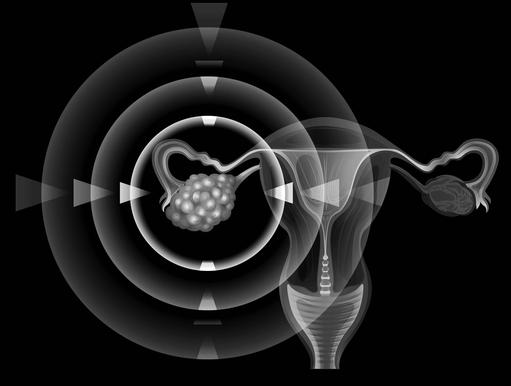- Diabetes UK’s (DUK) 2016 State of the Nation Report calls for diabetes education to be improved
- Effective education can reduce the vast and escalating burden of diabetes and is significantly cheaper than treatment
- Traditional diabetes education is failing miserably
- DUK’s education only reaches a small percentage of people with diabetes
- Self-management is the only realistic way forward to better diabetes management, but will require a transformation of the current patient-educator relationship
- Could DUK play a leading role in this transformation?
Improving diabetes education to enhance patient outcomes
For the past decade at least, the charity Diabetes UK (DUK) has been “calling for governments to do more” to improve diabetes care in order to stem the vast and escalating burden of the condition. Currently, 4m people or 6% of the population are living with diabetes in the UK, and this is projected to rise to 5m by 2025. It is estimated that around 10% of the NHS yearly budget is contributed to the treatment of diabetes; which equates to £10.3bn a year.
The prevalence of type-2 diabetes (T2DM) in particular has been increasing rapidly, and is now one of the world’s most common long-term health conditions. Life expectancy on average is reduced by up to 10 years for people with T2DM. Experts say effective education can prevent the onset of T2DM, help with its management once diagnosed, and slow the onset of complications, such as heart failure, blindness, kidney disease and lower limp amputations. The 2016 DUK State of the Nation report called for diabetes education to be improved.
Traditional diabetes education is failing
In the video below Richard Lane, Ambassador and Immediate Past President of DUK, describes the significant improvements in diabetes education since he was first diagnosed in the 1970s, and briefly describes DAFNE (Dose Adjustment For Normal Eating), one of the official UK adult courses for managing type-1 diabetes. Also, a patient with type-1 describes how helpful she found some voluntary diabetes educational courses.
Notwithstanding individual successes, traditional diabetes education programs are failing to reach a sufficient number of people to be effective in reducing the overall burden of the condition. Only 2% of people diagnosed with type-1 diabetes and 6% with T2DM attend official diabetes educational courses. Each year there are 24,000 early deaths from diabetes-related complications, and also 7,000 avoidable amputations. DUK wants 50% of people living with diabetes to receive education over the next five years.
DUK's education and support
DUK spends about 50% of the money it raises annually on diabetes education. Of the £37m it raised in 2015 it spent £8.0m on its “Better Care Everywhere” program that works with healthcare institutions, “to make sure people had access to the 15 healthcare essentials”; £7.0m on its “Not Alone with Diabetes” program, which is its helpline; £1.5m “Reducing the Risk of Diabetes”, which is DUK’s participation in the National Diabetes Prevention Program; and £8.2m, “Growing the Impact of DUK’s Work”, which develops “networks of healthcare professionals,” to “work with local community groups and volunteers all over the country”: a total of £24.7m.
Here we describe these expenditures as education and support services. Despite over £20m worth of diabetes educational and support services delivered by DUK each year, and the £10.3bn spent by the NHS on diabetes care and education, diabetes in the UK remains the largest and fastest growing health challenge of our time. “Diabetes is a very serious and complex health condition that requires constant self-management,” says Chris Askew, DUK’s CEO.
A fundamental transformation is required
Increasing self-management is relevant, especially as resources for diabetes are shrinking as the prevalence of the condition is rapidly increasing, particularly among children. However, achieving effective self-management requires a fundamental transformation of the way diabetes education is delivered.
It is projected that 66% of people in the UK will have smartphones by 2017. It seems reasonable to assume therefore that the majority of people living with diabetes will have smartphones by 2017. People regularly use their smartphones for 24-hour banking, education, entertainment, shopping, and dating. Diabetes education has failed to effectively leverage this vast and rapidly growing free infrastructure and peoples’ changed lifestyles to introduce effective educational support systems to enhance the quality of diabetes care, increase efficiency, and improve patient outcomes. Today, mobile technology is part of everyday life and people expect to be connected with their relevant service providers 24-7, 365 days of the year from anywhere.
Here is just one example of a simple evidence-based dashboard designed to help re-engineer primary care management of diabetes by (i) increasing the connectivity between health professionals and patients, (ii) enhancing patient knowledge of diabetes, (iii) encouraging people to self-manage their condition, (iv) increasing the efficiency of GP clinics, and in the medium to longer term, (I) keep people out of A&E, and (ii) slow the onset of complications.

Click on the image to see a demonstration of the dashboard
At very little cost, such a system could be rolled-out nationally through Clinical Commissioning Groups (CCG), integrated into GP clinics, and provide the basis of a national platform for diabetes education. Once patients and health professionals become engaged and familiar with the initial service offering, CCGs can bolt on additional services to further help people ward-off or manage their diabetes. This follows the model of digital champions, which succeed by using a core service to engage, and build a user base, and then add more services, so continuously increasing their users’ familiarity with their services. Engaging patients and health professionals any other way tends to fail.
The diabetes education dashboard ensures that people either at risk of diabetes or living with diabetes will always be part of an educator-patient network, which should increase the variety; velocity, volume and value of educational healthcare information patients receive.
The escalating incidence of diabetes is not new
Data reported by DUK in 2015 revealed that over the past decade the number of people living with diabetes increased by 60%, and the charity’s leaders claimed that the public health situation in the UK with regard to diabetes is being allowed “to spiral out of control”. “Diabetes already costs the NHS nearly £10bn a year, and 80% of this is spent on managing avoidable complications,” said Barbara Young, then the CEO of DUK. Such findings, while shocking, are not new.
The vast and escalating burden of diabetes
Tackling diabetes is important for the future of the NHS as there are over 4m people living with diabetes in the UK at present. This represents 6% of the UK population, or 1 in every 16 people. About 90% of the cases have T2DM. 90% of people with T2DM are overweight. Lifestyle changes and weight loss can help to prevent T2DM from ever occurring. Obesity is 40% more common among people living in deprived areas. 11.9m people in the UK are currently at risk of developing T2DM, but more than half could delay or even prevent a diagnosis by improved diets and lifestyles. This requires effective education that engages people and encourage them towards healthier lifestyles. About 10% of the cases are Type-1, which usually develops in childhood, and is often inherited. The NHS spends £10.3bn every year on treating diabetes, which equates to 10% of its entire budget. 80% of this is spent on diabetes medication. The annual indirect costs, such as productivity loss and informal care, are estimated to be £13bn. Effective education is cheaper than treatment.
The government will not spend more on diabetes
DUK’s repeated calls for the government to do more for diabetes care have been unsuccessful. This is largely because the NHS is struggling to cope with a surge in demand for care while suffering a major budget squeeze. In 2016, the government took back control of overspending semi-autonomous hospitals as part of its crackdown to tackle a NHS deficit of £2.45bn; the biggest overspend in its history.
DUK is a significant provider of diabetes education
To look at some aspects of DUK’s educational achievements we have taken a selection of extracts from its 2015 Annual Report. Against each extract is a short comment.
DUK: “11,000 people learnt how to better understand and manage their condition through our Type 2 online education course.”
COMMENT: This represents about 0.3% of the people in England diagnosed with T2DM.
DUK: “Our care line supported 22,361 people who needed encouragement, information or someone to talk to”.
COMMENT: This represents about 0.6% of people in England living with diabetes.
DUK: “5.9m visits to the Diabetes UK website in 2015 – almost 10 per cent more than the year before – giving people the opportunity to learn more about the condition, what we do and how to get involved.”
COMMENT: The key question here is the quality of the visit to the DUK website. Questions include inter alia: What is the average ‘dwell time’ for each visitor to DUK’s website? How many repeat visits does the website receive? What is the average number of pages viewed by visitors to DUK’S website? What are the most popular website pages viewed? What are the least popular website pages? How many visitors to the website come from the UK? What percentage of the people who visit the website “get involved”? How long do they stay involved? What percentage of the website’s visitors register with the site?
DUK: “15,196 people found out their risk of developing Type 2 diabetes at one of our Roadshows – and can now take steps to avoid it.”
COMMENT: This represents about 0.1% of the people in the UK at risk of T2DM.
DUK: “Educated more than 17,000 healthcare professionals to better work with and support those living with diabetes.”
COMMENT: Is this cost-effective? Would not online engagement be more appropriate?
DUK: “11,000 people registered to educate themselves about managing their Type 2 diabetes via our online course Type 2 Diabetes and Me.”
COMMENT: This represents about 0.3% of people in England diagnosed with T2DM.
DUK: “11.9 million people in the UK are currently at risk of developing Type 2 diabetes, but more than half of those people could delay or even prevent a diagnosis . . . In 2015 we worked with NHS England and Public Health England to develop the NHS Diabetes Prevention Programme. This partnership has the potential to help people in England who are at high risk delay – in some cases even prevent – Type 2 diabetes, and is being watched by the rest of the UK with interest.
COMMENT: In 2015 the UK government's Public Accounts Committee (PAC) observed that the national prevention initiative, which costs over £35m each year, lacked urgency, and recommended that it should, “develop a better and more flexible range of education support for diabetes patients.”
A HealthPad Commentary reviewed the national prevention program, described an innovative and successful US diabetes prevention initiative, and concluded that because the UK program employed 19th century technologies to address a 21st century epidemic it would likely fail. The Commentary further argued that preventing T2DM entails winning the battle against obesity, reducing poverty, and changing peoples’ diets and lifestyles. To do this, education programs need to employ modern behavior techniques to engage people and coax them to change their behaviour.
A further HealthPad Commentary, described the growing frustration of the government’s PAC and the National Audit Office (NAO) with the country’s diabetes establishment.
DUK: Our ‘Know Your Risk’ volunteers helped over 15,000 people find out their risk of Type 2 diabetes at one of our events, while our online tool was used over 240,000 times.”
COMMENT: This represents 0.47% and between 6 to 7.5% respectively of people living with T2DM in England.
DUK should report costs and outcomes not costs and the distribution of services
Two points about DUK’s statements of its educational achievements:
- The majority of the charity’s education and support services only appear to reach a small percentage of the total number of people either at risk of T2DM or those living with diabetes. We have drawn attention to the fact that a large percentage of people with T2DM are over weight and 40% of obese people reside in deprived areas of the UK. To be effective diabetes education must have the Heineken effect.
- For the past decade at least, the DUK has tended to report the costs and distribution of its education and support services. More relevant would be for the charity to report costs and the effects its services have had on reducing the burden of diabetes, slowing complications, improving efficiencies, and enhancing patient outcomes.
Diabetes education providers should adopt school performance measures
For years the UK’s state education service has been using pupil outcome measures to rate the performance of its schools. Why is this not the case for diabetes education? Can you imagine if year-after-year millions of children in England were failing their public examinations, and year-after-year education officers only reported the costs and distribution of their services? Can you imagine if the public education services only taught a very small percentage of the children eligible for education and there was no information about children’s performance in examinations?
Would people accept an education report that said, “This year Worthy schools spent £20m on physics teaching, which only reached 0.3% of pupils who would benefit from the subject, and we have no idea what percentage of those that were taught either took or passed the recommended physics exams”?
Technologies facilitate and transform diabetes education
With failing education programs people with diabetes are being driven to self-manage their condition with inadequate support. Inexpensive and ubiquitous technologies facilitate this, and increasingly people are demanding tools that track weight, blood pressure, daily exercise and diet. From apps to wearables, healthcare technology lets people feel in control of their health, while also providing health professionals with more patient data than ever before.
With more than 100,000 health apps, rapid growth in wearables, and 75% of the UK population now owning a smartphone, digital technology is well positioned to significantly improve diabetes education and management. Such technologies while ubiquitous, are ineffective if only used as an adjunct to traditional education. Traditional diabetes education programs have failed to introduce widespread digital support strategies, which significantly enhance the quality of care, increase efficiencies, and improve patient outcomes for the majority of people living with diabetes.
In the first video below Richard Lane describes how digital technology is helping people self-manage their diabetes. In the second, Lane and a patient diagnosed with T2DM suggest that the biggest challenge for diabetes care is actually engaging people who are either at risk of the condition or living with diabetes. Only once people are engaged do you stand a chance to raise their awareness of the disease, and encourage them to change their diets and lifestyles in order to slow the progression of the condition and even prevent it.
 How can mHealth help in the management of diabetes?
What are the biggest challenges of diabetes care?
Changing the patient-educator relationship
Self-management of diabetes should not be viewed simply as developing a website and providing a portfolio of techniques and tools to help people living with diabetes choose healthy behaviours. A necessary pre-requisite for effective education to reduce the burden of diabetes is the actual engagement of people who are either at risk of T2DM or living with diabetes. (Where are the national diabetes registers?). Once engaged education should inform and empower people, and provide them with access to continuous self-management support. This is substantially different to the way traditional diabetes education is delivered as it transforms the patient–educator relationship into a continuous, rich, collaborative partnership. A future HealthPad Commentary will describe an innovative and cost effective Mexican mHealth program, which has radically changed the patient-educator relationship by encouraging people, who are either at risk of T2DM or living with the condition, to take ownership of their own health, and become an integral member of their care team.
Takeaways
Diabetes is an out of control killer disease, which experts belief could be stemmed, reduced and prevented with effective education that is significantly cheaper than paying for treatment. Current diabetes education programs are failing miserably, and the prevalence of the disease is increasing rapidly, especially in young children.
Diabetes education and support require a radical overhaul to prevent the disease from spiralling out of control and bankrupting the NHS. This needs leadership to shape and drive a new and effective diabetes engagement/education model. Could DUK provide this?
|


























